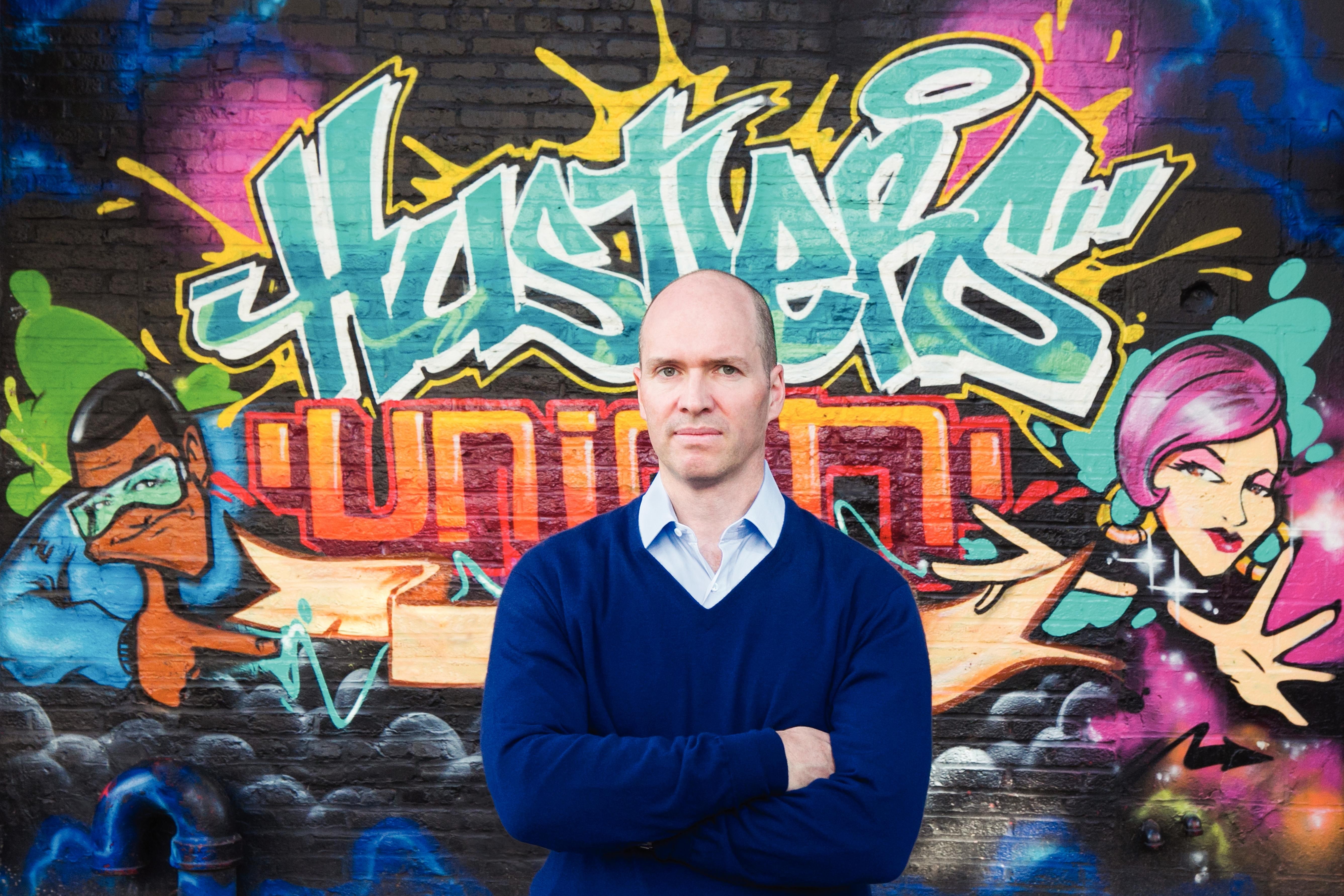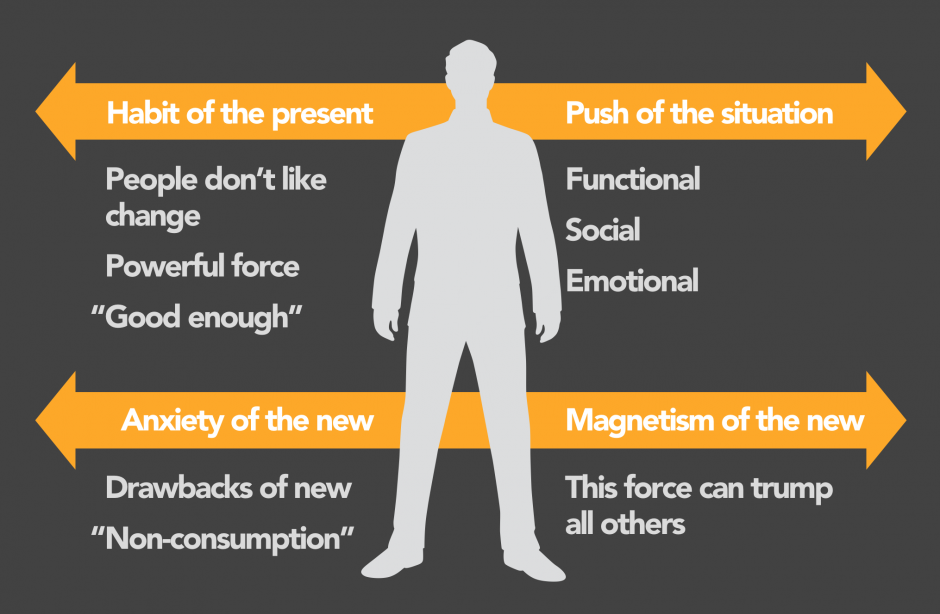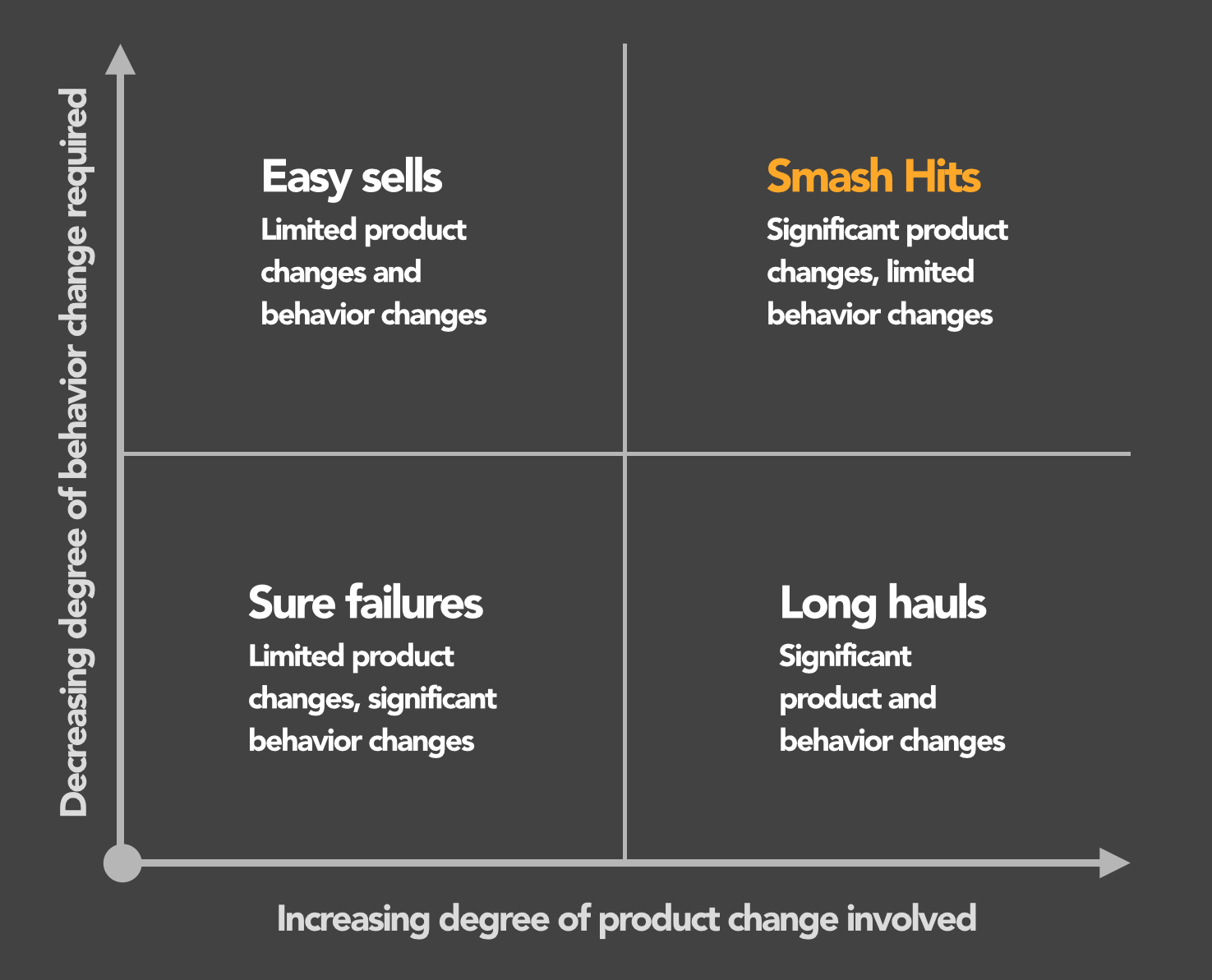Notes (quotes, really) from Dan Hill’s Dark Matter and Trojan Horses. A Strategic Design Vocabulary. Some of these are a tad out of context. I’d read the book if I were you. It’s very good, short and has both high level strategy ideas and lower level tactical examples.
- What gives designers the right to approach such complex areas, usually the domain of political scientists and civil servants? Aren’t these essentially beyond the capacity and capability — if not remit — of design? Culture is not something that can be designed, after all; is it even ethical to consider that it could be? However, a different conception of design — one not overly focused on problem-solving, or pretending to embark towards a resolution with a clear idea of the answer — could provide one way of addressing this concern, following an idea of prototyping and heuristics in a space of “unknown-unknowns” (after Donald Rumsfeld). There may be something in the role of designer as outsider, too — the naive position of not being a political scientist enables a different perspective, which could have some value.
- design must make clear that its remit is expanded from simply problem-solving to context-setting. The limited impact of focusing solely on the “lipstick on the pig end” of the “value chain” — the product, the service, the artefact — must be expanded on by addressing all aspects of this chain, and perhaps most importantly the strategic context of the chain itself. In other words, the question.
- elements of strategic design practice as conducted by Sitra’s SDU are outlined and discussed on the Helsinki Design Lab (HDL) website at helsinkidesignlab.org. In addition, SDU has published a book, In Studio: Recipes for Systemic Change (2011), which focuses in particular on the HDL Studio model, which is designed to rapidly prototype vision in complex, interdependent problem areas by better understanding the architecture of the problem.
- design has failed to make the case for its core value, which is addressing genuinely meaningful, genuinely knotty problems by convincingly articulating and delivering alternative ways of being. Rethinking the pig altogether, rather than worrying about the shade of lipstick it’s wearing.
- although it can solve problems, design should be about much more than this. Indeed, the problem-solving ability is perhaps the least important aspect, coming as it does at the end of a potentially more valuable exploratory process or approach.
- Swiss designer Karl Gerstner wrote “To describe the problem is part of the solution.”
- In terms of practice, design’s core value is in rapidly synthesising disparate bodies of knowledge in order to articulate, prototype and develop alternative trajectories.
- Strategic design is also, then, an attempt to reorient design to the more meaningful problems outlined in the introduction. A force should have a direction and a magnitude
- In strategic design, synthesis suggests resolving into a course of action, whereas analysis suggests a presentation of data. Analysis tells you how things are, at least in theory, whereas synthesis suggests how things could be.
- Our systems of governance still lend more weight to analysis than more qualitative synthesis.
- Synthesis is quite different to the apparently objective approach of the analyst or engineer, or that of management consultant; again, not least as it requires judgement in order to decide what to do, as synthesis produces
- While other consultant practices have other attributes, this ability to produce, to do, as a way of generating insight, of enacting and reorienting strategic intent, is a key differentiator to design in
- Again, the building project acts as a MacGuffin, in that it drives the plot with enough momentum to ensure that fire codes are actually changed; it provided enough of a gravitational pull of importance that it gave the relevant actors the motivation to reach into the policy apparatus and alter the codes. So timber is a building material, but also a strategic outcome. In itself, at Jätkäsaari, it is literally a design detail, a construction choice, but with these external outcomes in mind, this detail is connected to strategic impact well beyond the physical reality of the particular building. When viewed in these wider strategic contexts, the entire building itself is a mere detail, a distraction almost, which simply carries the other projects, gives them a reason to exist, lends an excuse to develop them — and the ordeals of a construction project provide the necessary rigour to develop them well. It feels frivolous to say that a building costing millions of euros is but a mere detail, but in a sense it is.
- This idea of fast and slow layers can then be used to frame the discussion of risk within a system, with some layers slower and careful, and others more agile, more exploratory. Seeing the layers as linked — from policy to delivery, from system to product or service — albeit slipping fluidly against each other — also suggests a platform approach that intrinsically enables learning, and thus closes the policy gap described earlier. User-centredness, another core value in contemporary design, can be layered across this system too, with exterior layers of the platform more participative than slower, more strategic “internal” layers. The faster layers can pivot with greater flexibility, over time altering the slower layers conceptually beneath, their intended plasticity dictating how much and how quickly their “shape memory” can be rewritten. Again, this is zooming from matter to meta and back again. All this would usefully reorient “problems” with risk, uncertainty and complexity through iterative development and wider systems thinking. It requires a comfort with complexity and “out-of-control systems” that is not exactly a natural fit with public-sector culture at this point.
- the MacGuffin provides motivation that drives strategic outcomes; the Trojan Horse contains the seeds of multiple strategic outcomes; the Platform elements enable those strategic outcomes to be diffused elsewhere, with prototyping of different layers ensuring its ongoing development. This vocabulary is not new — it’s been borrowed and appropriated from elsewhere. But being able to ask the question “What’s the MacGuffin?” or “How will this work as a Platform?” or “Where are the pivot points?”, for example, introduces into projects and practice a strategic element, a magnetic pull on the concepts of strategic replicability and systems thinking.
- Strategic design attempts to draw a wider net around an area of activity or a problem, encompassing the questions and the solutions and all points in between; design involves moving freely within this space, testing its boundaries in order to deliver definition of, and insight into, the question as much as the solution, the context as much as the artefact, service or product
- Call the context “the meta” and call the artefact “the matter”. Strategic design work swings from the meta to the matter and back again, oscillating between these two states in order to recalibrate each in response to the other.
- zooming back and forth from matter to meta, and using each scale to refine the other, is core to strategic design.
- The MacGuffin helps drive this process through its gravitational pull, through its requirement for rigour. It gets the ideas out of PowerPoint and into the “meta” of context, into redesigning the organisational, policy or regulatory environment in order to get things done. Legislation and policy is the “code” that enables replication elsewhere.
- Each strategic design project might ask: what is the MacGuffin here? What is the plot device that will drive the picture? What is the artefact that will motivate the various actors to create a richly rewarding experience for the audience, and enable strategic outcomes by also addressing the context?
- The MacGuffin is a simple artefact that provides motivation; the Trojan Horse is an artefact that carries “hidden” strategic elements.
- the particular product or content by itself is not enough; the wider context as a platform is what makes it sing, what makes it a success
- Thinking about what elements of a platform can be prototyped can be informed by understanding layers — of a policy, of a governance structure, of a prototype artefact — and the differing pace of change at each.
- The challenge may be more in terms of leadership and political capital than in practice. A platform approach intrinsically entails this slightly out-of-control aspect, although the activity is within a platform is fundamentally shaped by the foundations and affordances it is designed with, and an understanding of which layers can be fast and which must be slow.
- With a product, service or artefact, the user is rarely aware of the organisational context that produced it, yet the outcome is directly affected by it. Dark matter is the substrate that produces. A particular BMW car is an outcome of the company’s corporate culture, the legislative frameworks it works within, the business models it creates, the wider cultural habits it senses and shapes, the trade relationships, logistics and supply networks that resource it, the particular design philosophies that underpin its performance and possibilities, the path dependencies in the history of northern Europe, and so on. This is all dark matter; the car is the matter it produces. Thus, the relationship between dark matter and more easily detectable matter is a useful metaphor for the relationship between organisations and culture and the systems they produce.
- The dark matter of strategic designers is organisational culture, policy environments, market mechanisms, legislation, finance models and other incentives, governance structures, tradition and habits, local culture and national identity, the habitats, situations and events that decisions are produced within. This may well be the core mass of the architecture of society, and if we want to shift the way society functions, a facility with dark matter must be part of the strategic designer’s toolkit.9
- matter can unlock meta.
- “seeing patterns, making connections, and understanding relationships” are in fact the essence of design. Yet few designers would see that their design challenge is to understand, and often reorient, those relationships.
- This again explains why design so often fails to live up to its promise. Designers, like clients, are themselves attracted to the shiny end of projects, rather than delving into the dark matter and settling in for the lengthy engagement with an organisation. Yet organisation, context, bureaucracy, regulation and policy are absolutely crucial to the success of a project. If reoriented in such a way as to enable the intended outcomes, the intervention becomes a norm, the installation becomes a genuine product or service. Without that reorientation, we have failure, either of limited, restricted outcomes, or occasionally as catastrophe.
- design’s core value is in synthesising disparate views and articulating alternative ways of being.
- The hegemonic characteristics of such systems mean that we tend to ignore, or conveniently forget, that they have been designed; they have been imagined, articulated, stewarded into position.
- certain core systems are achieving a level of complexity that is increasingly beyond our comprehension. On the one hand, this is due to the characteristics of self-organising systems such as the global economy, which David Korowicz argues is beyond our ability to understand, design and manage:
- Fabricant hammers the final nails into the coffin of design thinking: “It is time to move on. Business never really got the message. What businesses continue to care about is innovation. While designers may think that innovation requires Design Thinking, that was an idea that never really stuck in the executive suite.”
- Victor Papanek’s diagram juxtaposes the share that the design typically has of a problem space, at around 5%, with what he calls “the real problem” consisting of the remaining 95
- Apple’s approach of “concurrent or parallel production”: “All the groups — design, manufacturing, engineering, sales — meet continuously throughout the product development cycle, brainstorming, trading ideas and solutions, strategizing over the most pressing issues and generally keeping the conversation open to a diverse group of participants. The process is noisy and involves far more open-ended and continuous meetings than traditional production cycles — and far more dialogue between people versed in different disciplines, with all the translation difficulties that creates. But the results speak for themselves.” (Steven Johnson, 2010)
- This is not to say that an external perspective isn’t an important part of any strategic process — it is. It’s just that the usual artefacts of consultancy — the research, the workshops, the reports — do not change the actors inside the organisation. After the consultant leaves, the organisation is left with the same people being asked to deliver the recommendations in a report that was written by people without a long-term interest in the organisation. This is something that the design-thinking crowd will rarely admit. Design thinking is usually predicated on an outside influence (design thinking) being absorbed into an organisation via the mechanism of a consultancy agreement (almost by necessity, short-term and restricted in brief). It will talk more about mindset change in existing staff than actively engaging with re-positioning and inserting strategic design capacity into the organisation. This last apparent oversight may be because building capacity within an organisation reduces that organisation’s reliance on external consultancy. Design thinking consultants would be talking themselves out of a job if they recommended the best answer: to possess a strategic design capacity within the organisation.
- Traditionally, the management consultant delves into dark matter. Traditionally, the design consultant delivers observable matter.
- to genuinely perceive the various systems at play within decision-making — the architecture of the problem — design must be embedded within, and positioned strategically ie with a remit to reconceive and reframe strategic intent. Equally, design must be placed just so in order to truly engage with stewardship, with ensuring that the strategic intent — the design — is carried through into delivery, into execution.
- Strategic design, then, is the application of professionally practiced design expertise to strategy, policy, governance and culture. An outcome of its work may be heightened awareness of some easily shareable attributes of design practice but the professional expertise of the designer is a core ingredient in the mix.
- The clients exist, and as they are clients, their position remains unchallenged, despite their positioning, remit, stance, framing, governance, and political relationships being a potentially fundamental component of the architecture of the problem. This is where design thinking falls short of anything remotely radical. It’s where it is actually stuck in process improvement within a predetermined problem space, unable to manouevre into more interesting and useful areas.
- Design performs best at the start of things, even before the need for a “start of things” has been clarified, but unfortunately, as Noah Raford pointed out, “the everyday realpolitik of most organisations will actively work against this from occurring”.
- Strategic design must be embedded within the heart of the organisation, in order to be able to perceive how the entire organisation operates (this is a system) and move freely across the intersection of its elements, and to have the agency to suggest and enact a reorientation of the organisation.
- studios can usefully bring together multiple stakeholders. Yet with complex interdependent problems requiring holistic thinking and action, this can lead to no one body taking responsibility, and so potential solutions fall through the cracks between organisations or within one organisation’s architecture.
- workshops or studios themselves tend to a particular kind of focus, based on conversation and collaboration — yet they rarely provide the depth of analysis to tightly define an issue such that it can be developed into action. This often requires subsequent work, by which time the potential client has left the building and achieved escape velocity, easily sidestepping momentum generated in the workshop. The workshop model, which is often the foot-in-the-door for consultancies in this field, is intrinsically flawed.
- This embedded nature of strategic design is a key differentiator from the consultant’s model of design thinking, which is often unable to produce the same effects often simply due to the consultancy model; the consultant has no “skin in the game” either, in the long run. This is not to say that a consultant model cannot produce work of value; just that it cannot produce much work of value in this context. It is left once again struggling to grasp the lipstick, rather than anything more meaningful
- ability to suggest a solution other than a building is, unfortunately, still radical for an architect. Most designers, most consultants, simply cannot act like this.
- Looking at architecture’s perennial inability to find more flexible and productive business models is another story. But one simple way to take the business model problem off the table is to be embedded within an organisation. There is a strong tradition here, as well as numerous examples of this in practice.
- design is not a stage that happens before engineering and manufacturing
- Strategic design is predicated on exactly this positioning: inside not outside, long-term not short, the pig not the lipstick.
- Only from within can genuine contextual change occur. This is perhaps the deepest flaw in the “design thinking” consultancy model, and not something you hear the likes of McKinsey, KPMG, and PriceWaterhouseCoopers talking about much either.
- Part of the issue for “the outsiders” is that strategic design solutions may not be “traceable” enough to validate the sales pitch of external consultancy.
- Design is no longer concerned only with things. Increasingly, design is concerned with systems — and now systems of systems or ecologies. In a sense, these systems are alive. They grow and co-evolve. Designers and product managers cannot always control them. Instead, they must create conditions in which they can emerge and flourish. All this requires new thinking and new knowledge. It requires design practice to learn.” (Dubberly, 2011)
- means that traceability — clarifying one’s impact upon the system in detail — is complex, if not virtually impossible, given the systems in question.
- The strategic designer moves between both, deploying observable matter to ensure that dark matter is addressed, and addressing dark matter to better deploy observable matter.
- As opposed to engineering, with its focus on problem solving, strategic design is oriented towards questioning the question, reframing if necessary.
As opposed to policy-making expertise, with its focus on the creation of models, strategic design is predisposed to sketching and iterative prototyping as a learning mechanism, while engaging in stewardship to ensure that user-centredness and design intent is realised in delivery.
As opposed to particular content expertise, focused within a bounded discipline, strategic design’s discipline is in integrative systems thinking rather than a form of path dependency, and is able to move freely across disciplines rather than within them, revelling in the complexity of a more holistic understanding of the system.
As opposed to management consultancy, strategic design’s embedded positioning enables the long-term view, a richer production process, and provides the authority to enact organisational or contextual change, while also using its production skills to create tangible prototypes and outcomes as a strategic act, generating learning and momentum through doing.
As opposed to creating the intervention or one-off, strategic design’s interests are in the replicable and systemic, and thus require engaging with the dark matter of organisations, policy, culture and other forms of context.
As opposed to traditional design practice, strategic design attempts to move beyond products, services and spaces into relationships, contexts, and strategies, yet without losing sight of the symbiotic relationship between meta and matter, and genuinely engaging with the public and civic as much as with the commercial.
As we have seen, in terms of design practice, strategic design at systemic scale is about this zoom from matter to meta, or rather, the importance of designing both the matter (the objects, spaces, services) at the same time as the meta (the context, the organisation, the culture). Strategy is enacted through a focus on the quality of execution, rather than an abstract model.
Replicability of solutions, derived from delivering projects, enables systemic changes that are allied to the public good.
Strategic design tries to ally pragmatism with imagination, deliver research through prototyping, enable learning from execution, pursue communication through tangible projects, and balance strategic intent and political capital with iterative action, systems thinking and user-centredness.
This is all underscored by an optimistic belief in progressive change, that the current conditions are changeable for the better, that the present can be transformed into multiple positive futures. Path dependency can be a useful force, such that strategies can be built on culture, history and the other inherent qualities of a context, yet it does not weigh solutions down unnecessarily.
Finally, strategic design is embedded within organisations, and particularly within public bodies that are reoriented towards leadership and directed innovation once again. This also means that innovative capacity has a direction, an end as well as a means.









